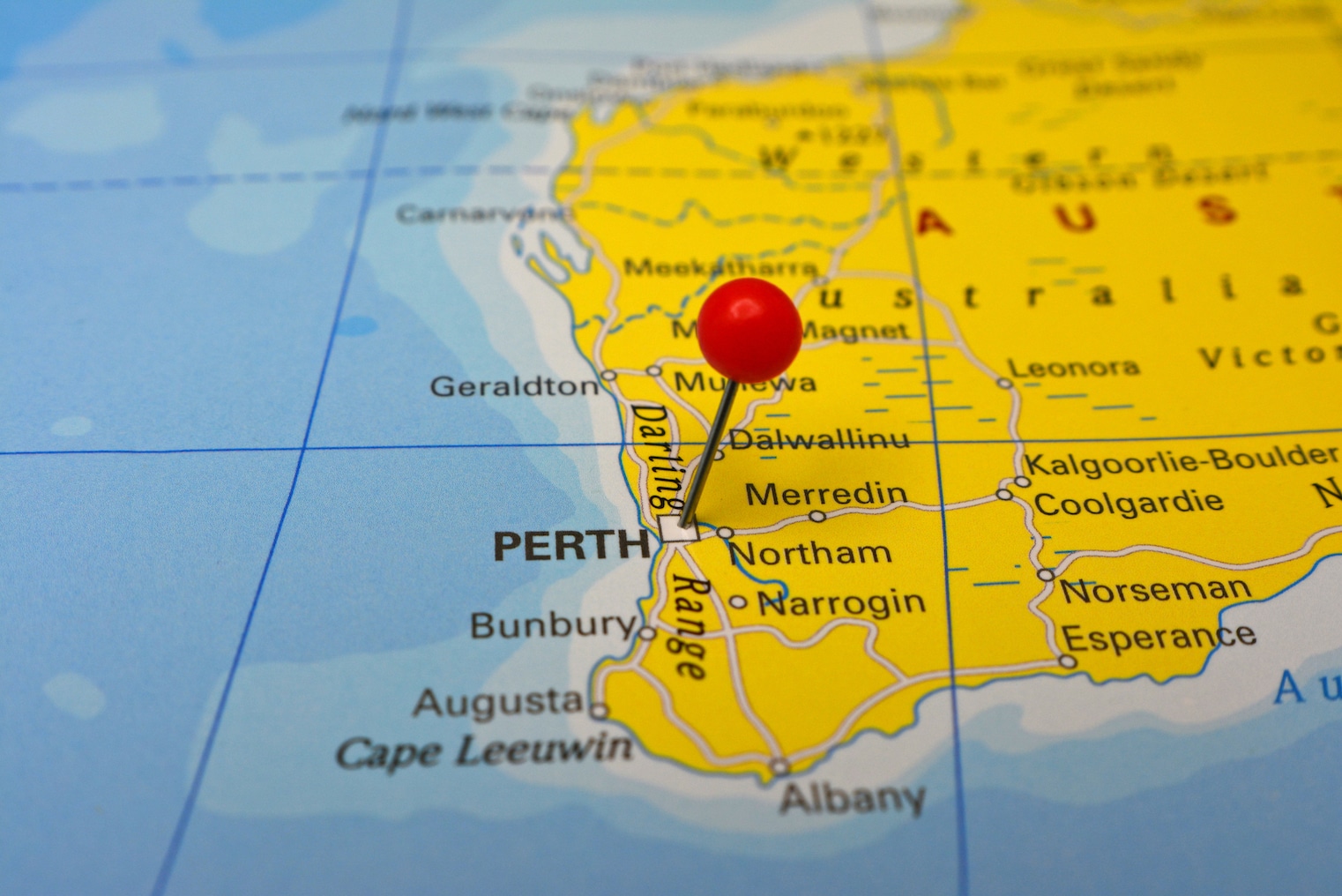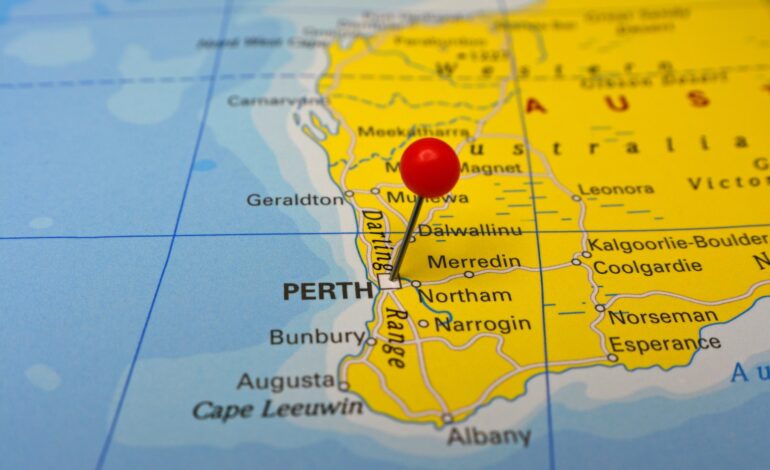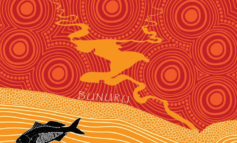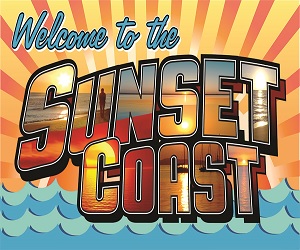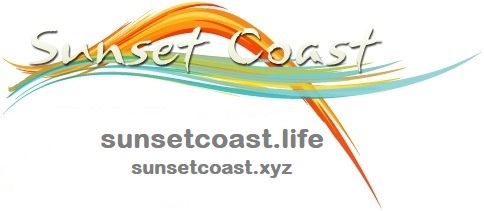The state of Western Australia with its sunset coast life style is unique in the with the largest coast line, sunniest place on the planet, mixing one of the newest cities with an ancient country of over 50,000 years of history.
State’s capital city is Perth
has an estimated population of over 1.7 million people. Also one of the largest urban sprawls in the world with low to medium density living for 90% of residential homes in the state. Most of the suburbs under 50 years old with a growth pattern that has been around 20,000 people per year for a decade. Based on research Western Australia population will reach 3 million by the end of June of 2023. Australia Bureau of Statistics (ABS)
WA has the fastest growth rate in Australia
Many reasons contribute to the growth rate which is lead by the mining boom that West Australia leads the way which created a lot of jobs.
Total land area
2,529,875 km² which accounts for 33 percent of Australia’s total land mass. With 12,889 km of mainland coast, WA has the longest coastline of all the Australian states and territories.
Top 20 places to live on the planet
As shown over the last few years its one of the safest places in the world for families, gun laws, low violence issues, control of pandemic, fresh air, clean living, natures, open space, low pollution. Plus quality home building, construction controls, town planning, real estate consistent growth, ongoing return on investment for property investors.
The Indian Ocean connection
The Indian Ocean is shared with major migration countries, having an independent local government system under federal democratic national laws & political stability. Is all underpinned by extensive recourses & industry to sustain any global down turns. It will continue as one of the growth capitals of the world.
Demography of WA
according to Australia census, 50.3 percent of Western Australians are male 49.7 percent are female.
Aboriginal and Torres Strait Islanders
account for 3.1 percent of the Western Australian population.
The top five ancestries for people WA
English, Australian, Irish, Scottish and Italian. The top five languages (other than English) spoken in WA are: Italian, Mandarin, Cantonese, Vietnamese and Arabic. The top six countries of birth for people in WA are: Australia, England, New Zealand, South Africa, India and Scotland.
The religious makeup of WA
25.5% No religion, 23.6% Catholic, 18.8% Anglican, 9.7% Religious affiliation not stated, 3.3% Uniting Church, 2.8% Christian, 2.2% Presbyterian and Reformed, 2.1% Buddhism, 1.9% Baptist, 1.7% Islam.
Population Density of WA
Density is 0.89 people per kilometer, which is ranking 2nd least populated state in Australia after Northern Territory. WA is one of the least densely populated states in the world.
Position State Population density
Australian Capital Territory : 151.49
Victoria : 23.54
New South Wales : 8.64
Tasmania : 7.24
Queensland : 2.50
South Australia : 1.6
Western Australia : 0.8
Northern Territory : 0.16
New Residence to Perth
Perth is one of the most geographically isolated cities in the world, but there are still many activities to do inside and outside the city.
The local job market is extremely promising for prospective expats, especially those who have skills in the mining industry.
The high season for real estate in Perth is during summer, November through March; if you plan on looking for an apartment or house during this time, prepare to have competition!
The Capital of Western Australia
Moving to Perth brings you to the capital of Western Australia, the largest among the country’s states or territories, and to the fourth-largest city in terms of population, right after Sydney, Melbourne, and Brisbane. It is also one of the fastest-growing cities in the country, and projections estimate that by 2050, between 3.9 and 5.4 million people will call the city home, a sizeable portion of which will be descendants of today’s visa – holding expats. However, unlike these metropolises, the city of Perth is located in a rather remote part of Australia, in the southwestern corner of the continent.
Expats moving to Perth should be well aware that they are about to settle in one of the most geographically isolated cities on the globe. In fact, when planning a vacation, it would be good to know that Perth is actually closer to Jakarta, the capital of Indonesia, than to Brisbane, the capital of Queensland on Australia’s opposite coast. Geographically, Perth is mostly surrounded by ocean to the west and desert to the east. Thus, it would be quite hard to take a sporadic road trip!
Nonetheless, the Perth area offers distinct advantages, especially for those who enjoy a relaxed lifestyle on sandy beaches. The region has a pleasant climate, reminiscent of the Mediterranean or comparable to Cape Town in South Africa. More specifically, Perth has hot and dry summers, cool and wet winters, and plenty of sunshine throughout the year.
The sunny weather, high quality of life, and also Western Australia’s job opportunities are some of the main reasons why moving to Perth is becoming more popular. Both the local government of Perth and the Australian federal government are actively trying to attract skilled and well-qualified immigrants in order to address the demands of the flourishing Western economy.
Regional Hardship Area
In 2011, Perth officially became a ‘Regional Hardship Area’, meaning that the city needs more workers to meet the number of available jobs. It is now one of the easiest cities in Australia for qualified workers in the mining and service industries to receive a Skilled Regional (provisional) visa for.
Although this visa is a great option for potential expats, a nomination from a State or Territory government agency is still required to ensure that you are a needed worker. Also, people who obtain this visa have to reside and work in low population growth areas. In Western Australia, low population growth areas are anywhere besides Perth and its surrounding areas. More information about the Skilled Regional (provisional) visa is available on the Australia Department of Border Control website.
The Local Job Market
Currently, the job market is very promising in Western Australia for qualified expats. This is apparent in both the primary and tertiary sectors of Australia’s economy. According to the Australian government, in the year 2015, one in three employers had trouble finding qualified workers to hire. Without the necessary employees, companies have trouble growing their businesses and meeting market demands. This is mostly why parts of the primary and tertiary sections are definitely worth looking into for people interested in either moving to Perth or, more generally speaking, to Western Australia.
Although there still are many job opportunities, there are far less in the mining and construction industries in 2016 than there were in 2011. Although these two industries are not as profitable as they used to be, the Australian government still projects a substantial amount of growth to occur over the next five years. Hence, there is still a need for qualified workers in the mining and construction industries in Western Australia.
While most of Perth’s and Western Australia’s economic success was once based on agriculture, forestry, and fishing, Australia’s government states that these industries are in fact detracting from the Gross State Product. Although agriculture is generally declining, Australian farmers still provide 93 percent of Australia’s food.
As far as the tertiary sector is concerned, professional services such as retail, healthcare, and social assistance are essential for the residents of Western Australia. The service sector in Western Australia supplies nearly over 50 percent of the state’s GDP and generates more than 80 percent of the state’s employment. Hence, this sector creates an abundance of jobs for qualified foreigners looking to move to Perth.
Alternatively, you might be moving to Perth to start a job in tourism. With its beautiful weather and sunny beaches, Perth, like Melbourne and Sydney, is a major tourist destination. Between March 2015 and March 2016, 9.8 million overnight visitors came to Western Australia, most finding the big city. In the future, Perth is planning on using more of its beautiful landscape and laidback lifestyle to expand its tourism industry.
Diverse Demographics
It is hardly surprising that the Perth metropolitan area, which has a population of an estimated two million inhabitants, also holds a diverse demographic mix. Most of the Australian-born residents living in Perth and Western Australia have English, Scottish, or Irish ancestry. These Australians are mostly descendants of the 19th-century British settlers who squatted on the territory of the indigenous Whadjik Noongar people. There are also numerous residents of Perth with ancestors from Italy, Portugal, Eastern and Southeastern Europe, or are of Anglo-Indian, Anglo-Burmese, and Chinese descent.
In recent years, the birthplace countries of migrants moving to Perth have shown a shift towards Asia. In addition to the UK, Ireland, New Zealand, and South Africa, it is China, Hong Kong, India, Indonesia, Japan, Malaysia, Singapore, and Vietnam that account for the majority of new residents calling Perth home. There are also sizable communities of migrants or expats born in Germany, Ireland, the Netherlands, and the US.
Nowadays, up to 31% of all residents in the City of Perth were born overseas. Among the religious population of Perth, there is noticeable diversity as well: After Catholics and Anglicans, Buddhists and Muslims now form sizable religious communities.
Neighborhoods in Perth
No matter where you come from, there is a distinct possibility you will meet other expats or immigrants with a similar background after moving to Perth.
Although the metropolitan region of Perth is but a tiny speck in vast Western Australia, it covers quite a bit of space. The metro area stretches 140 km in north-south direction, from Two Rocks to Mandurah, and about 50 km from the ocean to the Shire of Mundaring in the west. Where you are going to live depends first and foremost on your personal situation, especially your place of work and income. Nevertheless, we’d like to introduce you to a few neighborhoods and municipalities in metropolitan Perth.
Suburbs in Central Perth
The City of Perth itself is a “suburb” on the northern bank of the Swan River, in the heart of town. (No, that’s not a contradiction in terms. In Australian English, the word “suburb” refers to any district or neighborhood, no matter where it is located.) It is home to the central business district, the stock exchange, and a pedestrian shopping area. However, it is less suitable to look for residential housing here.
Younger expatriates, particularly singles or couples without children, may consider a move to Subiaco, Northbridge, or Fremantle. “Subi” is an inner western suburb of Perth, an older working-class district that has reinvented itself as buzzing, stylish, and cosmopolitan. Northbridge, too, is close to the city center and renowned for its nightlife. Traditionally the heart of Perth’s Italian, Greek, and Macedonian communities, it is nowadays known as ethnic and trendy.
Fremantle
Further down the Swan River, around the port, you will find Fremantle or “Freo”, as the locals call it.
Since it contains many historical buildings from the colonial area, it attracts its fair share of visitors exploring Fremantle’s tourist trails. Nonetheless, its arts community, live music scene, and alfresco dining culture is an added bonus for the residents.
If you settle in Fremantle, you’ll also benefit from its nature reserves and its transport connections, like the railway terminus for the entire Perth area. Expats from Italy, Ireland, New Zealand, Portugal, and the UK will run into quite a few compatriots here
Upper-Class and Middle-Class Residential Areas
If money is no issue, you should look into finding a new home in the inner suburbs of City Beach, Applecross, or Bicton. As the name implies, City Beach is a beautiful beachside district, one of the city’s most prestigious residential areas, with some ultra-modern and ultra-chic houses for the affluent.
Applecross and Bicton are both situated on the banks of the Swan River, and the available housing mainly caters to the well-to-do, especially in Applecross. In exchange for a generous sum, people have the opportunity to live in streets lined with jacaranda trees, in close proximity to multiple parks, the South of Perth Yacht Club, and several golf courses.
Bicton is also an area for the upper-middle class to the upper-class residents of Western Australia. The neighborhood has a variety of house types; there are many clusters of both cottages and mansions. If you are, or are thinking of becoming, a parent, Applecross and Bicton are very suitable neighborhoods for well-to-do families.
Expats on a normal income are more likely to move to an area like Willetton, a broadly middle-class to upper-middle-class suburb in the City of Canning, about 15km south of the CBD. It has an ethnically mixed population with a large Asian community and offers a variety of accommodation. The latter makes neighborhoods like this one a good choice for expatriates with children.
The Outer Metropolitan Area
Further from central Perth, there are plenty of municipalities in the outer metropolitan region which could be attractive for new arrivals. For instance, the City of Swan, located about 20 km further up the Swan River Valley, includes over three dozen different suburbs. Its districts range from the exclusive neighborhood near the local five-star resort to settlements like Ellenbrook. This planned satellite city and self-sustaining community is a rapidly growing residential area that may soon become a regional center.
Joondalup is a prime example of an established regional city in the outer metro area. It has its own shopping district, schools, and hospital, and is linked with Perth via railway connections to the CBD. Its population has a disproportionate percentage of parents, older workers, and retirees — people who probably aren’t that interested in the nightlife and entertainment scene of the central areas anymore.
The eastern Shire of Kalamunda is more of a “dormitory suburb” than Joondalup. Plenty of people mostly live and in the semi-rural area full of orchards, vineyards, and fields of roses, and commute to work elsewhere. If you enjoy peaceful surroundings and natural beauty, places like Kalamunda are ideal.
How to Find Housing in Perth
Once you have chosen some residential areas where you would like to live in Perth, you should try to find accommodation quickly. The highest demand for rental housing is in the summer (i.e. between November and March). If you plan on moving to Perth in these months, prepare for higher competition on the rental market. Online sites to start your housing search include:
Local Agent : Mitchell Residential / mres.com.au
Real Deal Australia / realdeal.com.au
realestate.com.au / reiwa.com.au / domain.com.au
Mitchell Residential
A local agency available as a preferred service provider of Sunset Coast Life
All property services : Buying, Selling, Investing, Management, Leasing, Commercial, Business, Building, Land + Advice
The Perth Real Estate Market and Housing Costs
You should take into account that the real estate market in Perth moves fairly fast. Once you see something you like, don’t hesitate to act immediately. Due to the strong competition for comfortable and affordable housing, make sure to provide the owner of a prospective new rental home with convincing evidence of your current financial stability, your most recent tax return (sometimes it is necessary), bank information, proof of residence permit or visa, and possibly a reference letter from your past landlord.
Although rent in Perth is presently far from cheap, both renting and buying costs have fallen significantly. According to the West Australian newspaper, the overall property values in Perth have declined by 0.9 percent in 2015. This may seem like a small amount, but it is estimated that the market is expected to undergo further losses. Currently, the PerthNow news claims that Perth’s properties are as much as 27 percent overvalued. Yet, the forecast remains positive and experts expect to see a moderate correction in cost. This is due to an oversupply of housing. In 2013-2014, Western Australia hit a record high for new housing starts, starting construction on nearly 29,000 units, the most since 1989.
Cost of Living in Perth
In general, the cost of living in Perth is above average. However, like the cost of housing, living costs are dropping. In the 2015 Mercer Cost of Living Survey, it ranked 48th out of more than 200 expat city hotspots under review. Regarding Australia, the survey highlights that currency fluctuations can greatly impact the price of business in an international environment. In other words, the decreasing value of the Australian dollar may essentially be an advantage for Australian companies searching for talented employees. This is because the US dollar is stronger than the AUD, it is becoming more cost efficient for international companies to send workers to Australia than to other parts of the world — provided they are paid in US dollars.
However, even if you receive your salary in Australian dollars, don’t worry; for example, although Perth is still an expensive city to live in, it remains cheaper than other metropolises like New York, Shanghai, Oslo, or Singapore. To give you a few numbers: In 2015, groceries for a middle-class family of four required about 250-300 AUD a week. This sum already includes occasionally taking advantage of Woolworth’s special offers or local produce from the farmers’ market.
Furthermore, in addition to rent, utilities, and food, you have to plan for transport and healthcare costs. The latter becomes particularly important if you are not eligible for Medicare, the public health insurance plan, as is the case for most expats with a provisional (temporary) visa. Therefore make sure you receive an appropriate salary and know how to budget, and you’ll be able to enjoy the many leisure opportunities of living in Perth.
Visa and Immigration Issues
Since Australia continues to be an immigrant nation, there are various visa options for expats and migrants. However, exploring them is beyond the scope of this introduction to Perth. If you’d like to know more about common visa types, please have a look at our article on moving to Australia or the immigration section of our Melbourne expatriate guide. For in-depth details, try the Visa Finder or the comprehensive info section of the DIAC website, or contact Skilled Migration Western Australia for specific questions about moving to this region:
Employment, Occupations and Industries
According to ABS, 60.7% of the people living in Western Australia works full time, 28.1% are working on a part time basis. Western Australia has an unemployment rate of 4.7%.
The main occupations of people living in Western Australia are Professionals, Technicians & trades workers, Clerical & administrative workers, Managers, Labourers, Community & personal service workers, Sales workers, Machinery operators & drivers.
The main industries people from Western Australia work in are Health care and social assistance, Construction, Retail trade, Manufacturing, Education and training, Professional, scientific and technical services, Public administration and safety, Mining, Accommodation and food services.
Facts About Western Australia
Western Australia is home to the Argyle Mine, the world’s largest producer of diamonds.
Western Australia produces around 70% of Gold and other important exports of nickel, salt and other various metals.
Until Dutch explorers came to Western Australia, Europeans did not know Black Swans existed and thought that all swans were white.
The town of Broome has the world’s oldest open air cinema, which has operated since 1916.
The famous Hollywood stars Heath Ledger, Melissa George and Gemma Ward are from Western Australia.
Western Australia is also home to the longest stretch of straight railway in the world..
WA is the second largest state in the world after Russia’s Sakha.
Broome is the world largest producer of pearls.
References
The following links provide data for this topic:
Australian Bureau of Statistics: www.abs.gov.au
australia.gov.au: australia.gov.au
Tourism Western Australia: www.westernaustralia.com
Perth Western Australia
